Moonstone
A member of the feldspar group.
Feldspars form complex isomorphous series between the endmembers albite and anortite on the one hand and the endmembers albite and orthoclase on the other hand. Members of the albite-anortite series are summed up under the term plagioclase. Members of the albite-orthoclase series are termend alkali feldspars.
Classical moonstones are orthoclase feldspars.
Moonstone shop
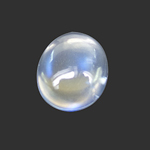
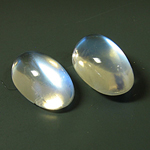
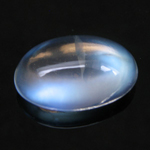
Blue moonstones from Sri Lanka
Origin of Name: from the bluish silvery sheen that reminds of moonlight.
The effect is also called "adularescence", named after a feldspar location in the Swiss Adula mountain range.
The name orthoclase derives from ancient Greek ὀρθός (orthos) = upright, perpendicular and κλάσις (klasis) = to break and hints to the angle of the cleavage planes.
Synonyms and trade names: none. There is, however, a number of other feldspars, in particular labradorite (albite-anorthite series), being sold as moonstone. Multicoloured labradorite (spectrolite) is often sold as "rainbow moonstone".
.jpg)
.jpg)
.jpg)
"Rainbow moonstone" (spectrolite) from Bihar, India
In German speaking countries "adular" is sometimes used synonymously to moonstone, although adular actually is an orthoclase variety with a typical crystal habit
Can be confused with: blue moonstone can be confused with blue labradorite.
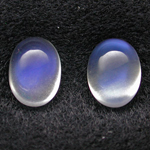
Blue labradorite from Tanzania
.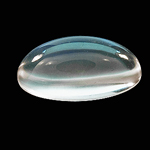
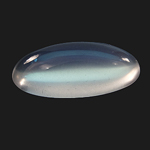
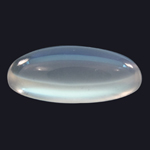
Three fine blue moonstones from Sri Lanka
Sri Lankan moonstones, or Ceylon moonstones, as they are still called in the gem trade, sometimes feature interesting Illmenite inclusions that look like a rope-ladder through loupe or microscope
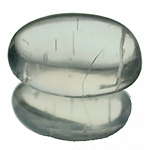
Ceylon moonstone wih Illmenite inclusions
Quantitatively the mooonstone deposits of South India are most important.
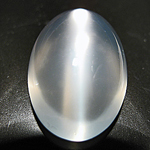
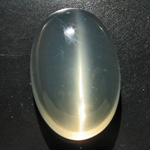
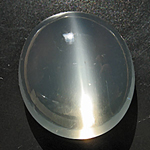
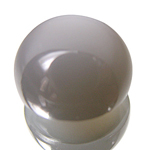
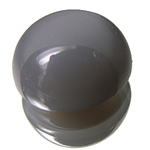
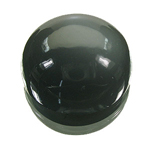
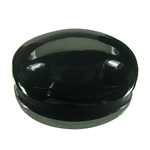
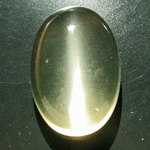
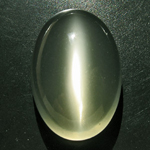
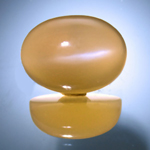
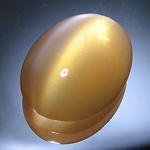
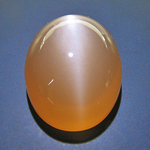
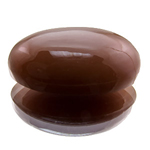
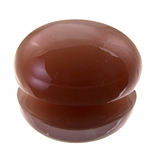
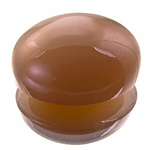
Indian moonstones come in many different colours.
Orange varieties are usually termed "pink moonstone" in India.
Note that many show a cat´s eye effect.
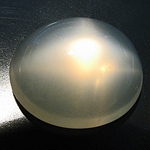
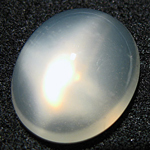
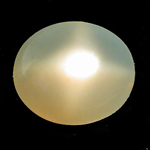
Star moonstones are not uncommon. The star is usually 4-rayed although black star moonstone sometimes sport 6 rays (sorry, we don´t have any of those at the moment).
And then there is alpine moonstone from Austria and Switzerland.
After the discovery of moonstone at the Moerchnerkar Mountain in Tyrol´s Ziller Valley, the notion that alpine moonstone is not of gem quality and thus not worth cutting had to be abandoned.
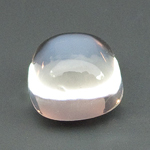
Alpine moonstone from the Ziller Valley, Tyrol, Austria
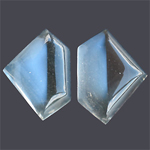
Some very rare specimens of moonstones from the Ziller Valley (less than 2% of the total find, according to our estimate) show a very interesting phenomenon indeed. If cut in correct orientation, the silvery sheen can be seen on one half of the stone, while the other half appears crystal clear and perfectly transparent. Upon tilting the stone by some degree, the sheen jumps to the other side and the phenomenon reverses.
Handling: moonstone has perfect cleavage and should be set and worn with care. Sensitive to acids and heat. Do not clean ultrasonically!
Worth knowing: moonstone consists of a myriad of lamellae. The blue or silvery sheen is produced by reflection of light at those.
 Deutsch
Deutsch